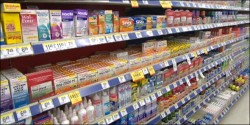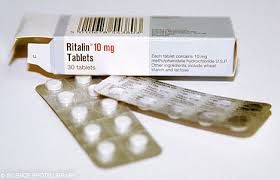Stimulants and the Effects of Prescription Drug Abuse
Prescription drug abuse in this country is escalating, according to the White House. So much that the Centers for Disease Control and Prevention is calling the abuse of drugs like prescription stimulants an epidemic. Ironically, this rise coincides with a decline in the use of street drugs such as cocaine.
Abuse of prescription drugs is defined as use other than the issuing doctor intended – for example, taking a stimulant to help keep you awake to study. An estimated 48 million people are guilty of taking these drugs for a nonmedical reason, but not everyone gets addicted. What are the signs of stimulant abuse and why do some people develop an addiction?
A Little About Stimulant Drugs
Stimulants increase awareness and attention. At one time, they were used to treat everything from asthma to obesity, explains the National Institute on Drug Abuse. The tendency to abuse this type of medication has cut down on their clinical use, but doctors still prescribe stimulants to treat:
- ADHD
- Narcolepsy
- Treatment-resistant depression
Stimulants mimic brain neurotransmitters to enhance energy levels and concentration. They can make a person abusing them feel like they have a superpower.
Stimulants cause:
- Blood pressure to go up
- The heart to beat faster
- Blood glucose levels to rise
For some people, taking a stimulant improves their cognitive functioning. Students will abuse Adderall to help them study, for instance. The drug helps them think clearer and remember more when preparing for an exam.
The list of commonly abused stimulants includes:
- Amphetamines – Street name “Speed,” this includes dextroamphetamine or Dextrostat
- Methamphetamine – Street name “Meth,” Prescription grade methamphetamine is prescribed to treat ADHD and narcolepsy
- Ritalin – Methylphenidate designed to help people with ADHD
- Concerta – A time-release form of methylphenidate
- Vyvanse – Lisdexamfetamine dimesylate, an ADHD drug
- Strattera – Atomoxetine HCl for ADHD
- Adderal – Mixture of amphetamine and dextroamphetamine for the treatment of ADHD and narcolepsy
The Addiction Theory
The real danger of stimulant abuse is not overdose, but addiction. Addiction is a chronic, relapsing brain disease brought on by changes in the organ’s neurochemistry. Stimulants trigger a reward response in the brain. This is the same response that creates an addiction to tobacco, alcohol and opioids like heroin. The drug helps you to feel better, whatever that means at the time. With stimulants, it is usually a burst of energy and feeling that you can do anything.
The response is a build up of tolerance to the drug. Users like the way the drug makes them feel and they start to spend time chasing that high. Chronic use makes the harder and harder to get, so you take more of the drug or switch to something more toxic. Soon, the only way to feel better is by using. The brain craves the drug and your body responds to not getting it by going into withdrawal.
The Danger of Prescription Stimulant Abuse
Kids will tend to take stimulants to be part of the party crowd without understanding the damage they do to their bodies. Stimulants, in particular, are hard on the heart. It must work harder in response to the brains push for more energy. The blood pressure goes up and the heart rhythm may become irregular. Stimulants are especially dangerous for people with an undiagnosed heart condition.
Experimentation with different delivery methods increases the danger. Injecting Ritalin, for example, introduces solid fillers into the bloodstream that will block blood vessels, causing damage to the eyes and lungs. Inhaling prescription stimulants can introduce these same fillers into the lungs, creating asthma and emphysema.
Signs of Stimulant Abuse
There are physical and behavioral signs that someone is abusing prescription stimulants. Highs and lows are one clear indicator. A person abusing stimulants may be overly energetic and then suddenly their energy drops and he or she may have a hard time staying awake. Other signs to watch for include:
- Fast breathing
- Dilated pupils
- Decreased appetite
- Anxiety
- Paranoia
- Very sociable and overly friendly
- Long days with no sleep
- Dry mouth
Overcoming Addiction to Prescription Drugs

Behavioral therapy is often used to treat addiction to prescription drugs.
For most people, the best chance at recovery comes with medical intervention. Treatment for addiction to prescription stimulants relies on behavioral therapies. The first step is to wean the person off the drug and ease the withdrawal symptoms. There are no FDA-approved medications to support detox from stimulants. It is done gradually to reduce the cravings.
Once the detoxification is complete, the focus will shift to behavior management and monitoring. Stimulant abuse will show up on a urine test, for example.
Treatment centers teach healthy lifestyle choices and better coping mechanisms to support sobriety. Part of recovery includes aftercare that helps this person avoid situations that might tempt them to use again. For teens, that would mean avoiding raves and unsupervised parties.
As with most things, the best treatment is prevention. Parents paying attention to where teens go and their study habits may help prevent prescription stimulant abuse and avoid addiction.
Stimulants and the (Effects of Prescription Drug Abuse) (Stimulants.com)
Prescription drug abuse in this country is escalating, according to the White House. So much that the Centers for Disease Control and Prevention is calling the abuse of drugs like prescription stimulants an epidemic. Ironically, this rise coincides with a decline in the use of street drugs such as cocaine.
Abuse of prescription drugs is defined as use other than the issuing doctor intended – for example, taking a stimulant to help keep you awake to study. An estimated 48 million people are guilty of taking these drugs for a nonmedical reason, but not everyone gets addicted. What are the signs of stimulant abuse and why do some people develop an addiction?
A Little About Stimulant Drugs
Stimulants increase awareness and attention. At one time, they were used to treat everything from asthma to obesity, explains the National Institute on Drug Abuse. The tendency to abuse this type of medication has cut down on their clinical use, but doctors still prescribe stimulants to treat:
- ADHD
- Narcolepsy
- Treatment-resistant depression
Stimulants mimic brain neurotransmitters to enhance energy levels and concentration. They can make a person abusing them feel like they have a superpower.
Stimulants cause:
- Blood pressure to go up
- The heart to beat faster
- Blood glucose levels to rise
For some people, taking a stimulant improves their cognitive functioning. Students will abuse Adderall to help them study, for instance. The drug helps them think clearer and remember more when preparing for an exam.
The list of commonly abused stimulants includes:
- Amphetamines – Street name “Speed,” this includes dextroamphetamine or Dextrostat
- Methamphetamine – Street name “Meth,” Prescription grade methamphetamine is prescribed to treat ADHD and narcolepsy
- Ritalin – Methylphenidate designed to help people with ADHD
- Concerta – A time-release form of methylphenidate
- Vyvanse – Lisdexamfetamine dimesylate, an ADHD drug
- Strattera – Atomoxetine HCl for ADHD
- Adderal – Mixture of amphetamine and dextroamphetamine for the treatment of ADHD and narcolepsy
The Addiction Theory
The real danger of stimulant abuse is not overdose, but addiction. Addiction is a chronic, relapsing brain disease brought on by changes in the organ’s neurochemistry. Stimulants trigger a reward response in the brain. This is the same response that creates an addiction to tobacco, alcohol and opioids like heroin. The drug helps you to feel better, whatever that means at the time. With stimulants, it is usually a burst of energy and feeling that you can do anything.
The response is a build up of tolerance to the drug. Users like the way the drug makes them feel and they start to spend time chasing that high. Chronic use makes the harder and harder to get, so you take more of the drug or switch to something more toxic. Soon, the only way to feel better is by using. The brain craves the drug and your body responds to not getting it by going into withdrawal.
The Danger of Prescription Stimulant Abuse
Kids will tend to take stimulants to be part of the party crowd without understanding the damage they do to their bodies. Stimulants, in particular, are hard on the heart. It must work harder in response to the brains push for more energy. The blood pressure goes up and the heart rhythm may become irregular. Stimulants are especially dangerous for people with an undiagnosed heart condition.
Experimentation with different delivery methods increases the danger. Injecting Ritalin, for example, introduces solid fillers into the bloodstream that will block blood vessels, causing damage to the eyes and lungs. Inhaling prescription stimulants can introduce these same fillers into the lungs, creating asthma and emphysema.
Signs of Stimulant Abuse
There are physical and behavioral signs that someone is abusing prescription stimulants. Highs and lows are one clear indicator. A person abusing stimulants may be overly energetic and then suddenly their energy drops and he or she may have a hard time staying awake. Other signs to watch for include:
- Fast breathing
- Dilated pupils
- Decreased appetite
- Anxiety
- Paranoia
- Very sociable and overly friendly
- Long days with no sleep
- Dry mouth
Overcoming Addiction to Prescription Drugs
For most people, the best chance at recovery comes with medical intervention. Treatment for addiction to prescription stimulants relies on behavioral therapies. The first step is to wean the person off the drug and ease the withdrawal symptoms. There are no FDA-approved medications to support detox from stimulants. It is done gradually to reduce the cravings.
Once the detoxification is complete, the focus will shift to behavior management and monitoring. Stimulant abuse will show up on a urine test, for example.
Treatment centers teach healthy lifestyle choices and better coping mechanisms to support sobriety. Part of recovery includes aftercare that helps this person avoid situations that might tempt them to use again. For teens, that would mean avoiding raves and unsupervised parties.
As with most things, the best treatment is prevention. Parents paying attention to where teens go and their study habits may help prevent prescription stimulant abuse and avoid addiction.



